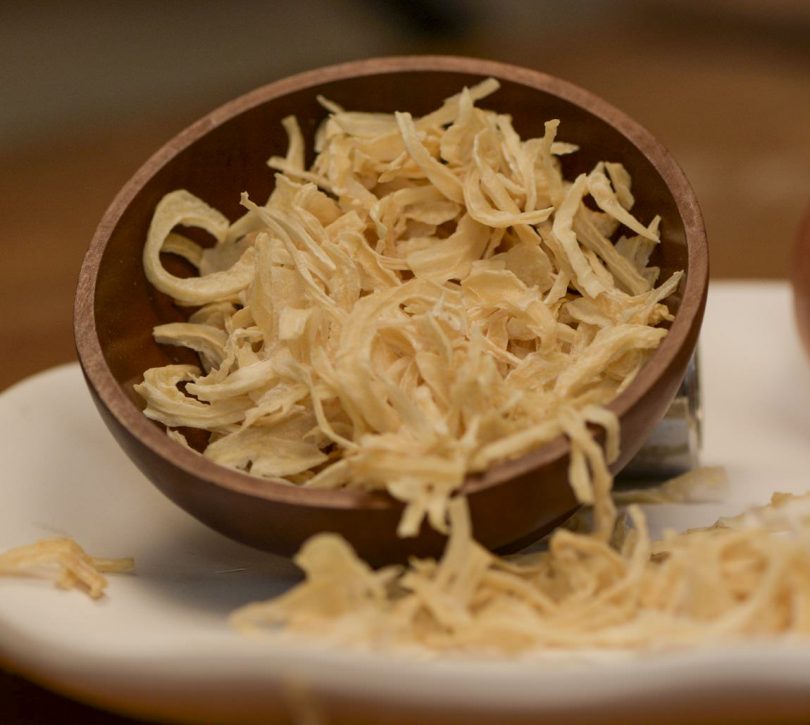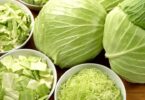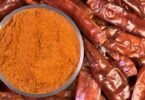One of the most popular food ingredients that are found in any household kitchen is the onion. Due to its versatility, onions are used in so many recipes, either freshly chopped or even dried. Although dehydrating onions to be used in cooking is not really popular because the process of dehydration already sounds complicated, with these easy to follow ways and steps, dehydrating onions will surely be no sweat.
How To Dehydrate Onions at Home
Using dehydrator
If you have a dehydrator at home, you will realize that this is probably the easiest way to dehydrate onions. All you need to do is:
- cut the onions and lay them on the trays
- pile them into the dehydrator and set the temperature to 135°F (60°C)
- leave it there for 4-12 hours until onions are already leathery in appearance.
Once the onion is inside the dehydrator, you can already go on with your other errands without the need to constantly check them. If you are constantly drying other fruits and vegetables aside from onions, using a dehydrator can be very useful.
Dehydrating onions in the oven
One way to dehydrate onions at home is by using an oven. Here is the step-by-step guide of dehydrating onions in the oven:
- Pre-heat it at 140°F (60°C).
- Lay the thinly-sliced onions in a single layer on a cookie sheet and include an oven thermometer in the middle.
- Place it inside the oven and leave the door open at approximately 2 inches to allow air circulation.
- Check the temperature every 30 minutes to ensure that the onions are being heated evenly.
- After about 6-12 hours of waiting, the onions will shrink and will now be ready for storage.
Because ovens can easily be found in any kitchen, using this to dry onions is one of the easiest ways and the preparation does not require any special technique. The only disadvantage of this process is leaving the oven door slightly open since it may be dangerous for kids or pets playing around the kitchen, so be very watchful while doing this.
Dehydrating onions in the microwave
Microwave dehydrating has also gained popularity in drying onions. It gains more advantages than the conventional process because the quality of the onions is damaged less due to its shorter exposure to the dehydration process.
- Cut onions into long thinly-sliced pieces.
- Put them in a microwavable plate and place them inside the microwave.
- Set the timer for 30 minutes and make sure to set it at “defrost” setting to avoid burning the onions.
- Check the onions after 30 minutes and flip it to check if it has been dried completely.
Although this process is easier and faster, microwaving the onion has been observed to cause charring of the product.
Air drying onions
One conventional way of dehydrating onions is by hanging them inside your home.
To do this…
- Clean the onions but do not wash them with water as this may promote bacterial growth.
- Leave about 6 inches of the stem and braid the onions together. While braiding, add three onions per layer tracing from the stem of the last onion.
- Do this step until you have almost a foot of an onion and place it in an open space of your home.
Air drying is probably one of the most conventional ways of dehydrating onions if you have no oven or dehydrator at home. Though cost-savvy, this process will take longer for it requires almost 2-3 weeks of drying. Ensure also that onions are hanged outside your kitchen or any rooms at your house to get rid of the pungent odor produced by onions.
This process also causes an undesirable change in texture, color, and flavor of the dried onion due to its exposure to constantly changing temperature. You should also keep in mind that air-drying onions will not dehydrate onions completely.
Sun-drying onions
Aside from air drying, another way to dry an onion is through sun drying. A great advantage of this process is that onions dehydrated after are rich in color and have a translucent appearance.
- Rinse and clean the onions and pat them dry after.
- Slice the onions evenly so that they are dried consistently. You may also opt to separate the rings to hasten the drying process.
- Place them in drying racks or metal sheets and position them in a location with direct sunlight. Ensure that they are placed away from pets to protect your onions.
To know if your onions are perfectly dehydrated, they should be crisp and brittle, which may require 8-11 hours of sun drying for areas with low humidity.
Just beware with this process because it requires sunshine and the changing weather can extend the dehydration time and may even cause spoilage due to moisture exposure.
SEE ALSO: How to Dehydrate Food Successfully: A Beginner’s Guide
How To Store Dehydrated Onions
After successfully dehydrating the onions using any of the ways mentioned above, storing them properly should be done. This is to prolong the shelf life of the dehydrated onions and to safeguard their quality. Note that one of the main goals for dehydrating onions is to use them for a longer period of time so proper storage is really important, otherwise, you may not be able to maximize its use.
Before storing the dehydrated onions, allow them to cool first. After cooling, place them loosely in a bowl and set aside out of direct sunlight for a couple of weeks and shake them gently and check if there are still water droplets in the container. If you find any water droplets, this means that they are not yet completely dried and needs to be dried more. If no moisture is found, you can already store the dehydrated onions.
One way to store them is using vacuum sealed bags to avoid degradation of the product. Airtight containers can also be used for storing, provided that they are kept in a cool, dry, and dark place. You may also store them in the freezer for longer shelf life. If you are using plastic bags for storage, make sure that you are using freezer bags because they are thicker than ordinary Ziplocs.
Properly stored dehydrated onions can last more than a year and surely, making them on your own and using them will add an interesting touch to your recipes.





